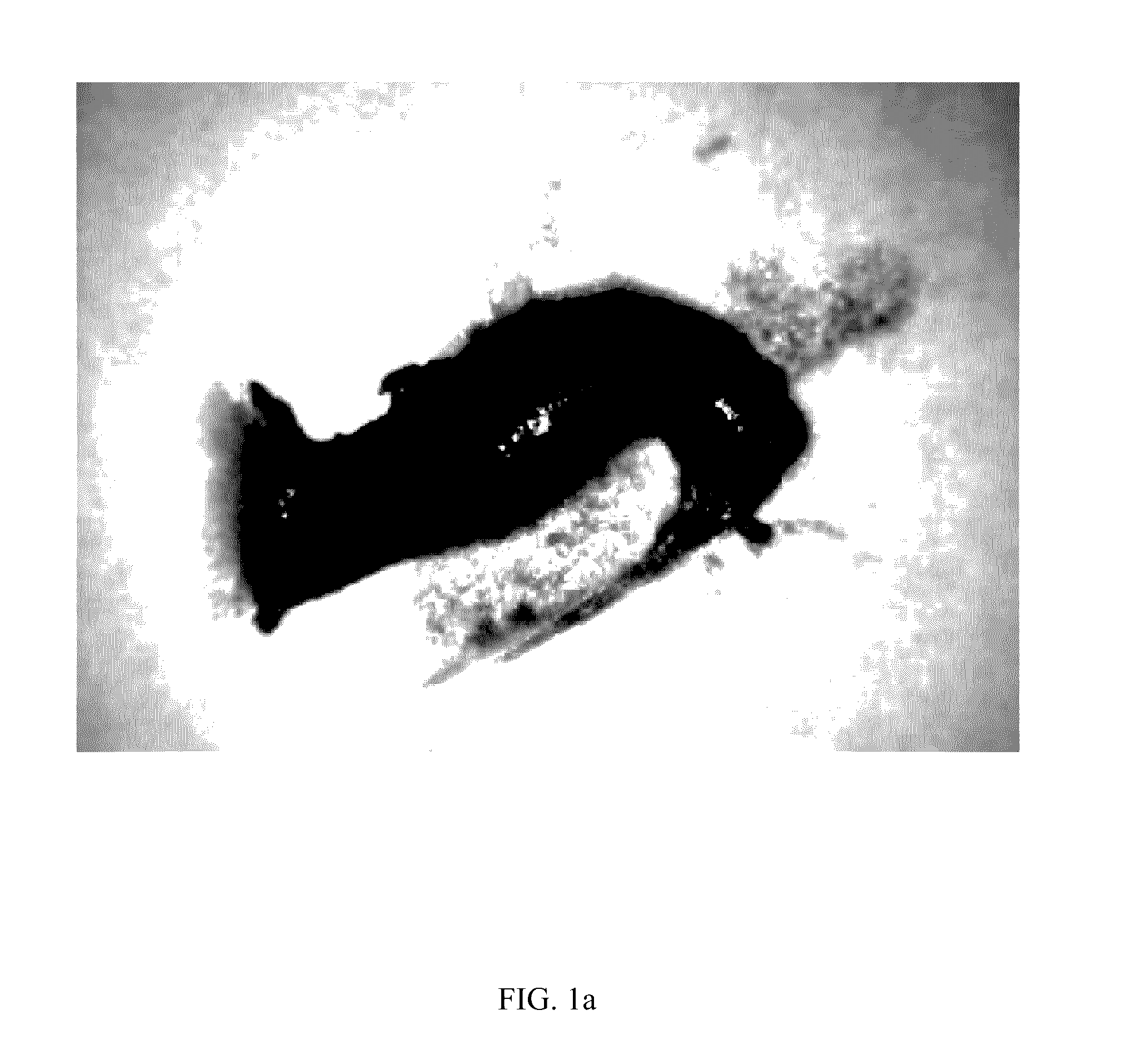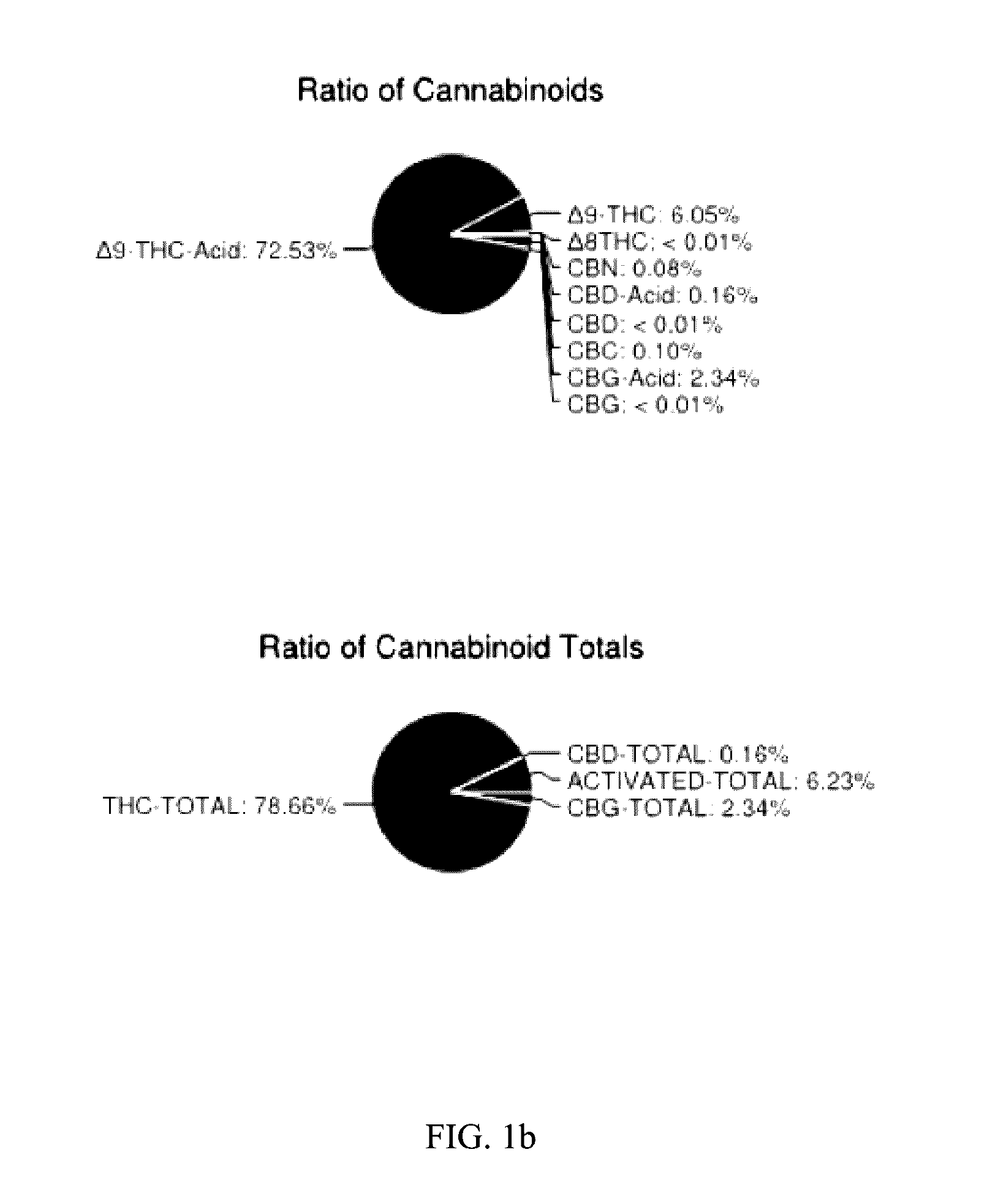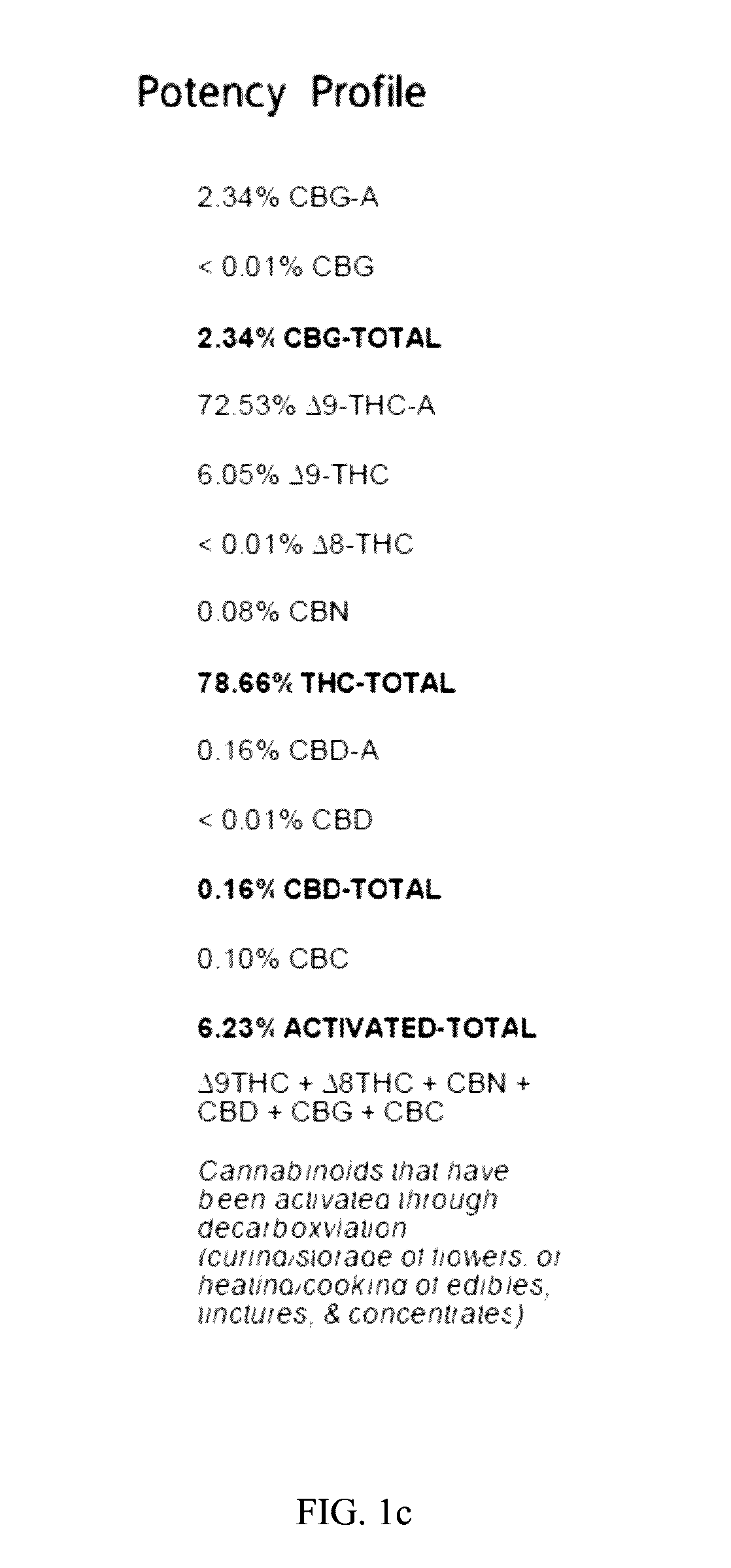Systems and methods for cannabinoid and terpene extraction and purification
- Summary
- Abstract
- Description
- Claims
- Application Information
AI Technical Summary
Benefits of technology
Problems solved by technology
Method used
Image
Examples
example 1
Extraction Protocol Example
[0047]30 g freshly dried Dutch Treat variety of Cannabis sativa L. was gently broken apart by hand and loaded into Soxhlet extraction thimbles, approximately 4 g per thimble. Fresh EtOAc (200 mL) was added to a 1000 mL boiling flask which was equipped with a Teflon coated stir bar. The Soxhlet apparatus was assembled (with extraction thimble in place) with clamps to sit directly on top of a VWR stirring hot plate. Ice cold water was circulated through the reflux condenser throughout the experiment.
[0048]The boiling flask was then heated with vigorous stirring until the EtOAc began boiling and condensing above. The heat was then lowered in order to maintain a constant rate of condensation. Each extraction thimble was allowed to fill and siphon a total of two times per batch of plant matter. Some siphoned early, resulting in only 1.5 siphons.
[0049]As soon as the second siphon began, the boiling flask was removed from the heat and allowed to rest until no sol...
example 2
Extraction Protocol Example
[0055]One pound of crude cannabis solids (e.g., flower, sugar trim, and / or trim) was separated to break the plant matter apart into course chunks
[0056]A 6 L APOTHECARIAN apparatus was equipped with a condenser through which ice cold water was circulated. The apparatus was charged with 500 mL ethyl acetate (EtOAc) and approximately 3 oz. of crude cannabis solids were loaded at a time. The temperature was raised to reflux, and once the solvent began to drip through the plant matter the time was noted. After approximately 5 minutes, the condenser was removed from the heat source and allowed to cool. The spent plant material was removed and a fresh batch loaded. More solvent was loaded as well.
[0057]Once all of the plant matter was extracted, the solvent with cannabis extract was cooled to room temperature, transferred to a beaker, treated with anhydrous food grade sodium sulfate, treated with food grade activated charcoal, and filtered. The solvent was then r...
example 3
[0058]4.5 pounds of Cannabis sativa trim was ground in a food processor. The material was loaded into a grain steeping bag, and placed into the extraction chamber. Approximately 10 L of ethyl acetate was added (until the plant material was completely covered with solvent). This was allowed to soak for 30 minutes before the grain steeping back was removed from the solvent, and suspended in the extraction chamber and allowed to drain.
[0059]A Buchner funnel was prepared with a Whatman #1 filter and a large coffee filter. About 1 pound of sodium sulfate was added in a layer to the coffee filter, followed by about a pound of activated carbon in a layer on top of the sodium sulfate. The extraction mixture was filtered through this, changing its appearance from green to yellow / brown.
[0060]The resulting purified extraction mixture was distilled with heat (78° C.), resulting in a completely decarboxylated resin. The overall yield was 10.5%. The resin was analyzed, the results of which are sh...
PUM
 Login to View More
Login to View More Abstract
Description
Claims
Application Information
 Login to View More
Login to View More - R&D
- Intellectual Property
- Life Sciences
- Materials
- Tech Scout
- Unparalleled Data Quality
- Higher Quality Content
- 60% Fewer Hallucinations
Browse by: Latest US Patents, China's latest patents, Technical Efficacy Thesaurus, Application Domain, Technology Topic, Popular Technical Reports.
© 2025 PatSnap. All rights reserved.Legal|Privacy policy|Modern Slavery Act Transparency Statement|Sitemap|About US| Contact US: help@patsnap.com



